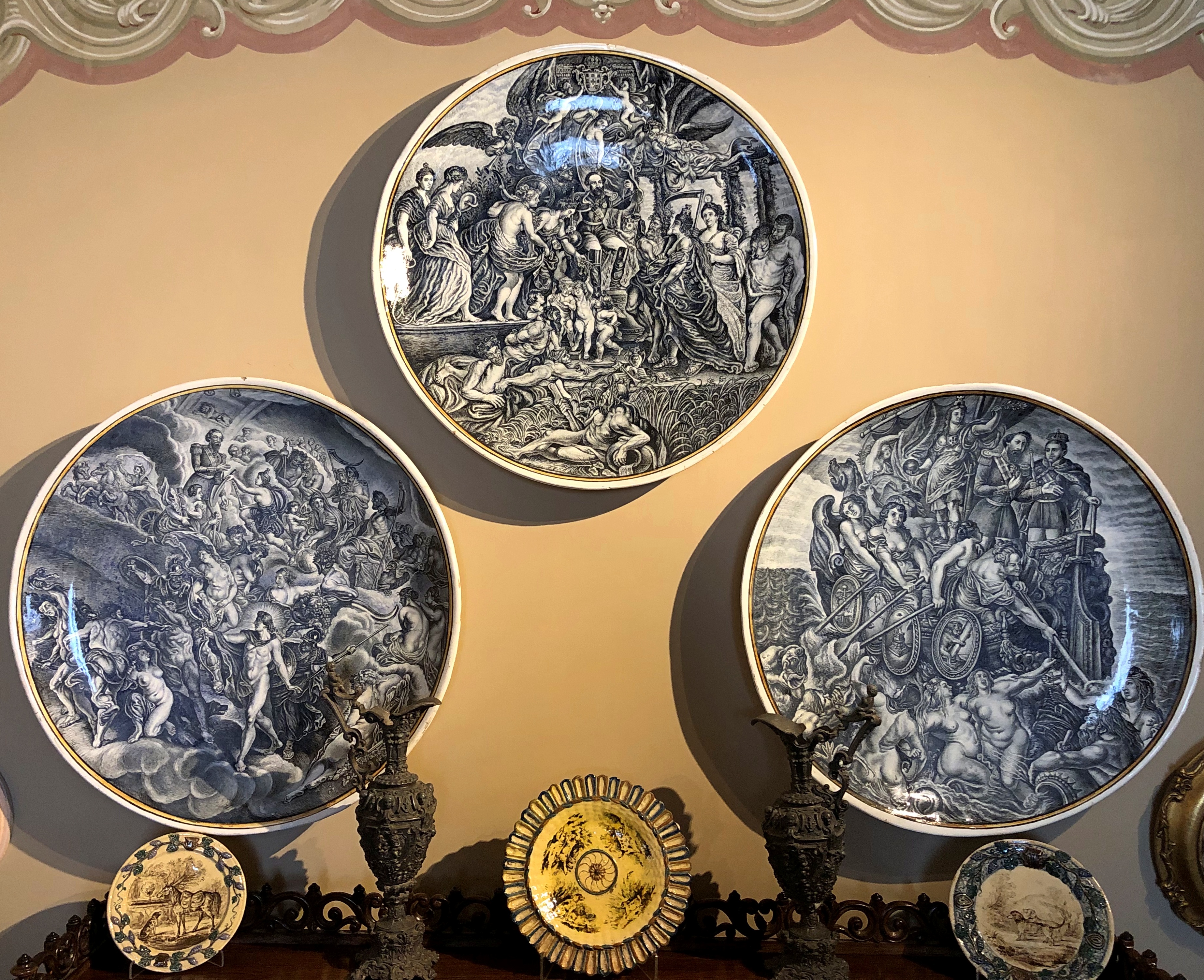Sizable rain and cool air to welcome June on the first day of the month. But June in northern Illinois isn’t one for too much cool air, and temps came in very pleasant today. That means deck time.
I’m glad we saw the interior of Pena Palace (Palácio da Pena), up in the hills of Sintra. Otherwise I wouldn’t have made the acquaintance of this fellow.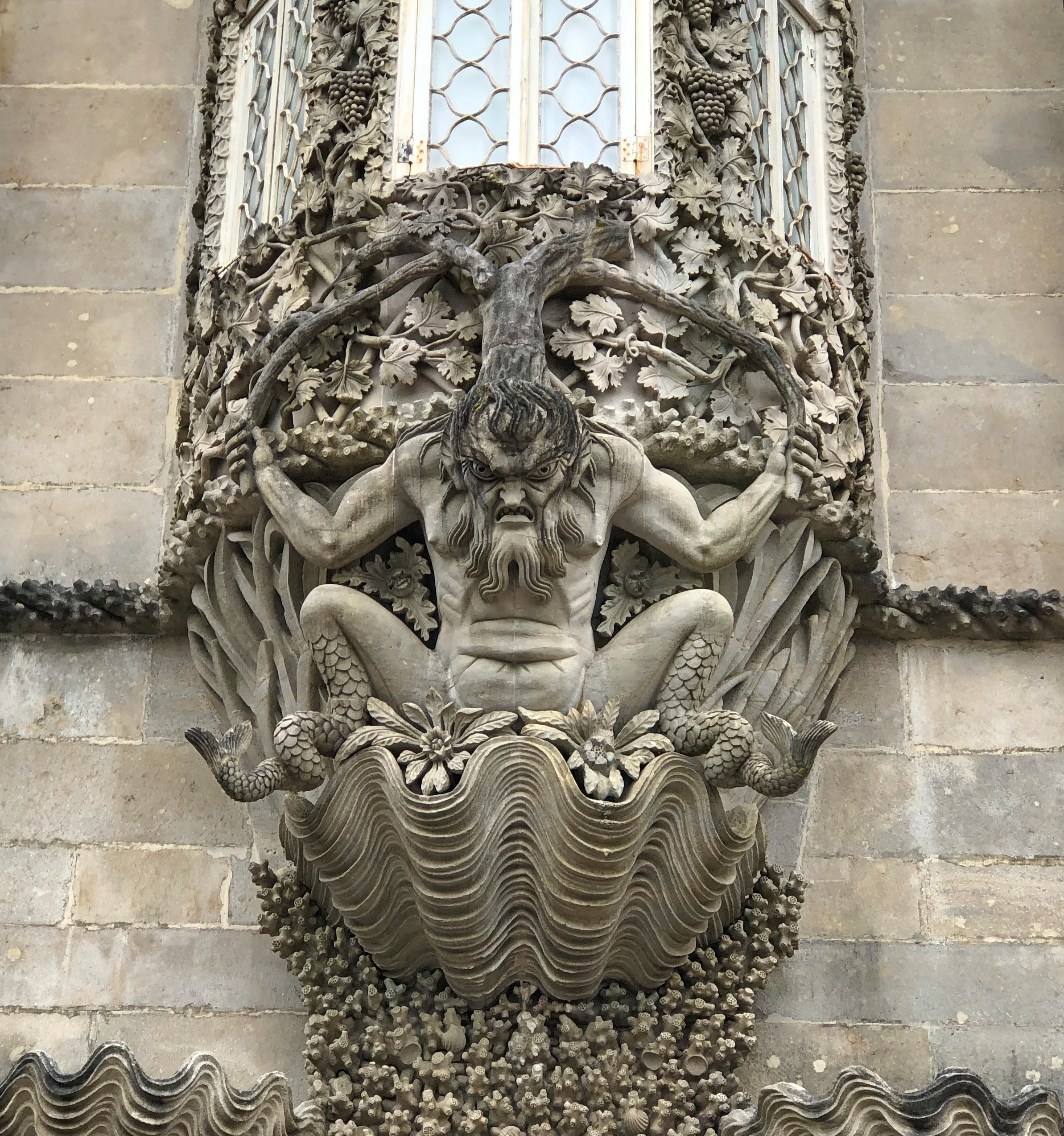
It isn’t too often you see grotesques that are that grotesque. Looks like that tree growing from his head gave him a screaming headache, and those fish tails for legs couldn’t be that comfortable, either.
He’s just a cast member at Pena Palace, which is an eclectic riot, a hilltop thrust of colors and fanciful towers. There are more than a few visitors on any given weekday in the spring.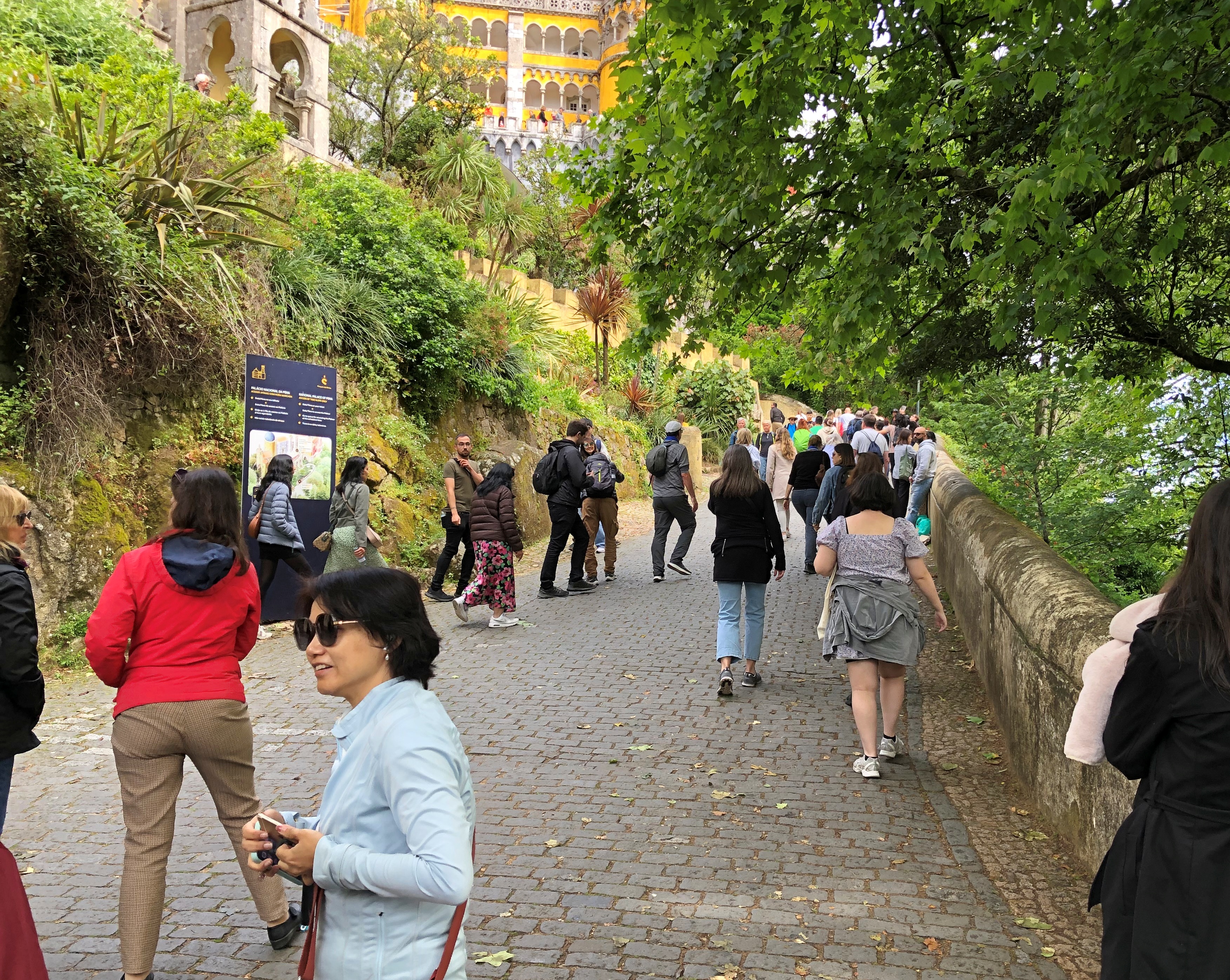


Looks like a crunch, but it was anything but an ugly crowd. They were in a good mood. They’d come because they heard this is a place worth going to see. It is? Yes. Yes it is. They knew they wouldn’t be disappointed, except for those (few?) who are disappointed in everything.
It’s best, I think, to start by looking up at the palace, which luckily is how all visitors approach the architectural extravaganza.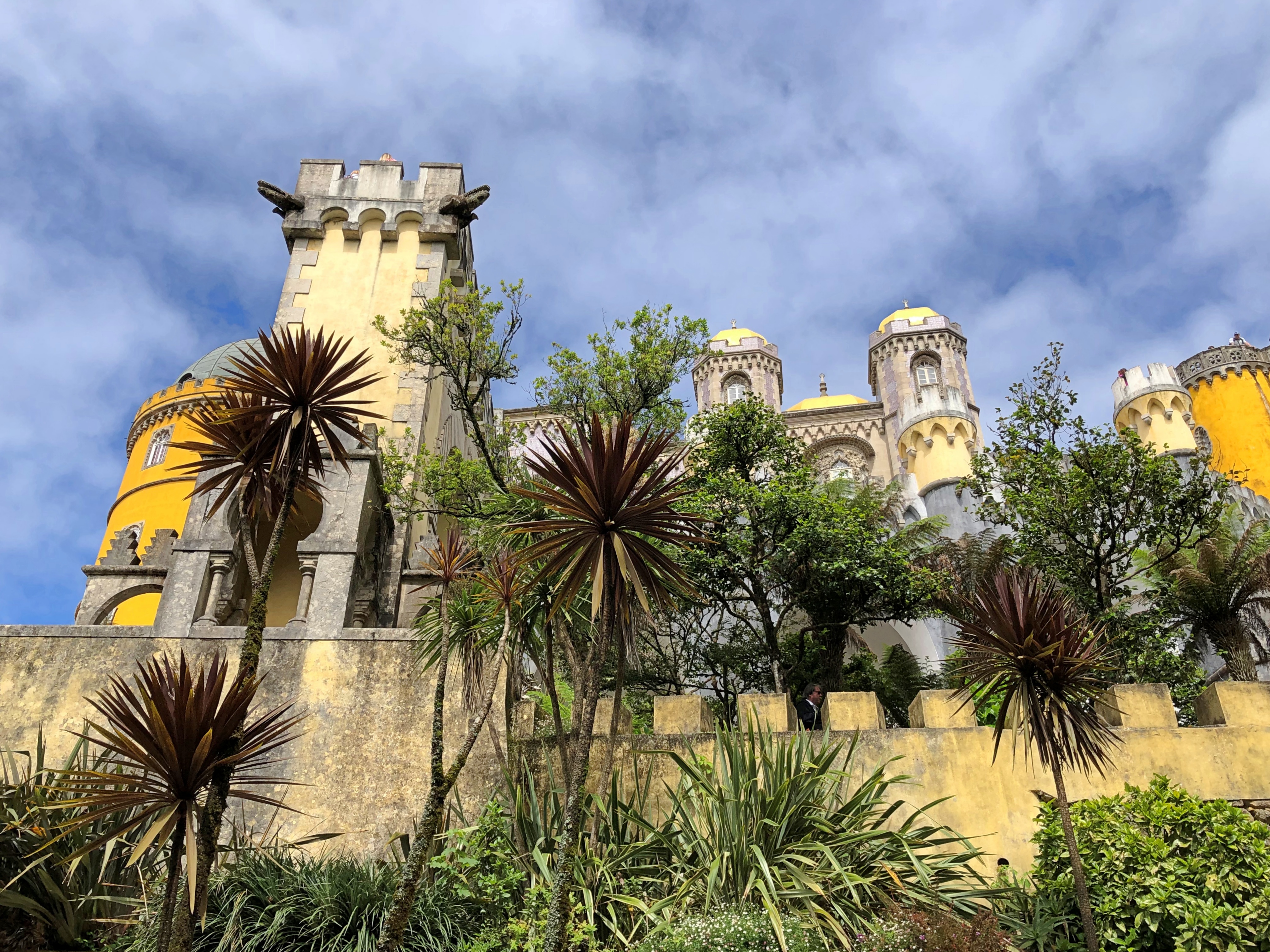
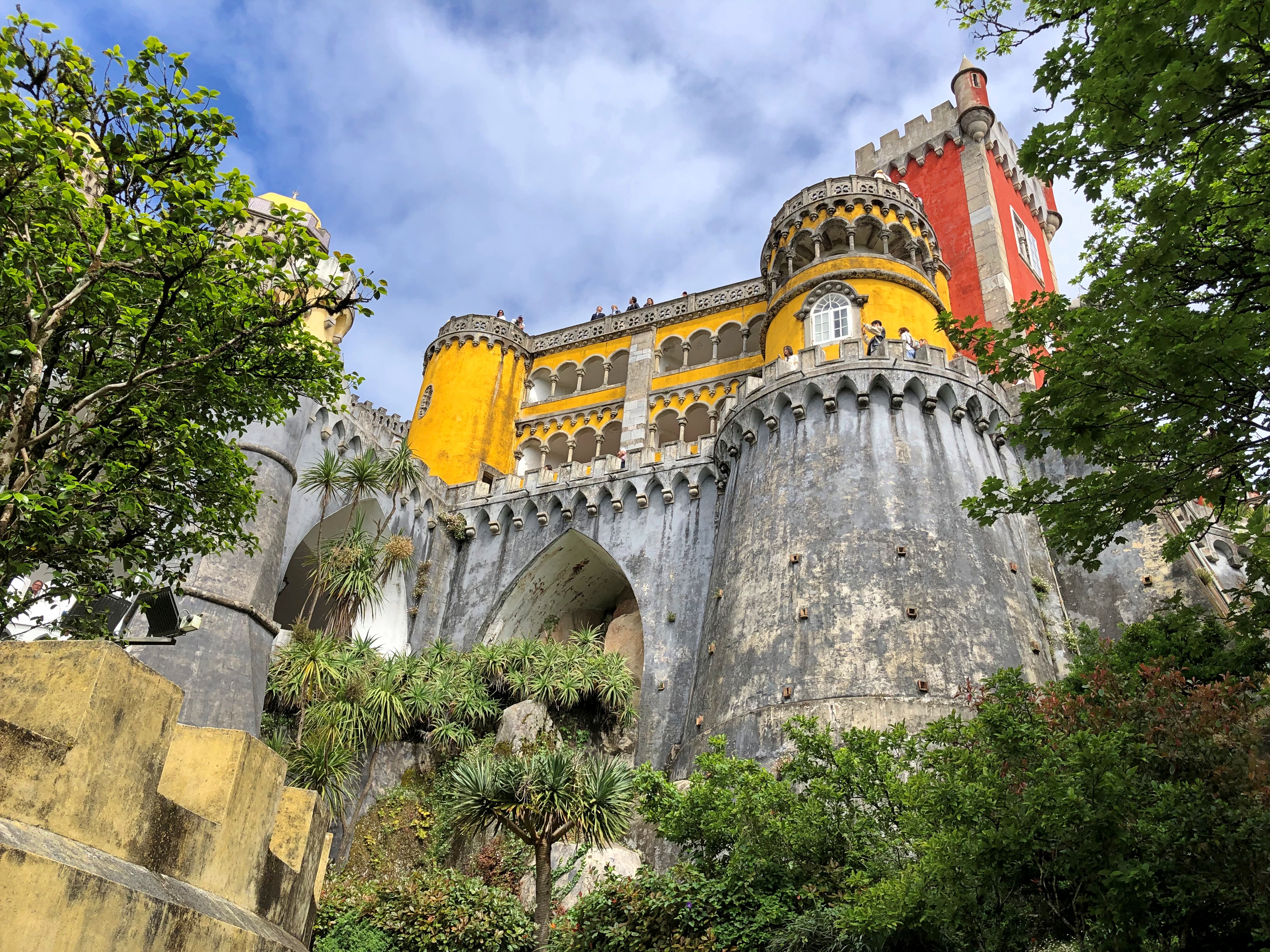
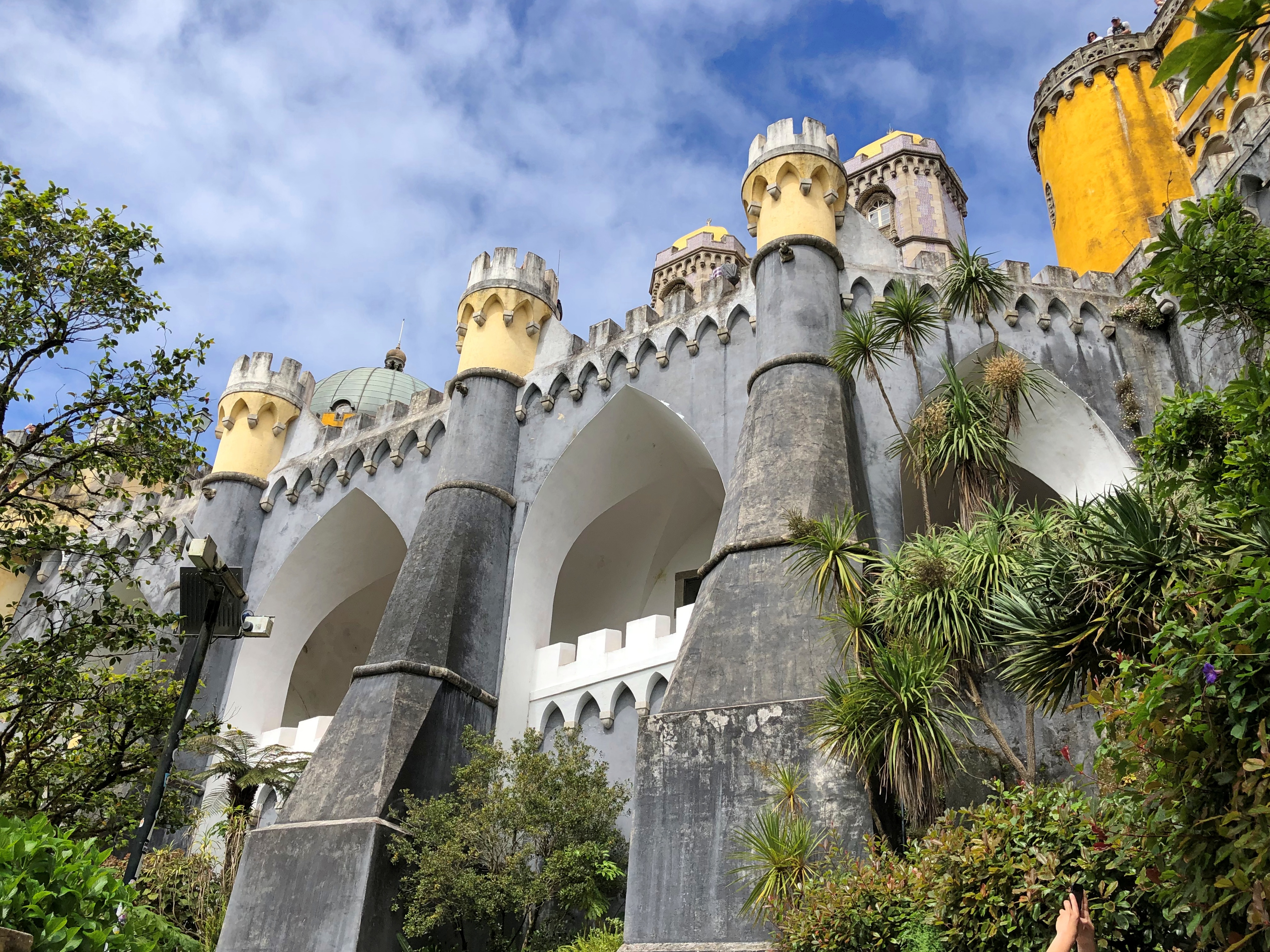

The palace was built on the site of a ruined monastery, abandoned since – you guessed it, the 1755 earthquake. Surviving elements of the monastery were incorporated into the palace design, especially the cloister.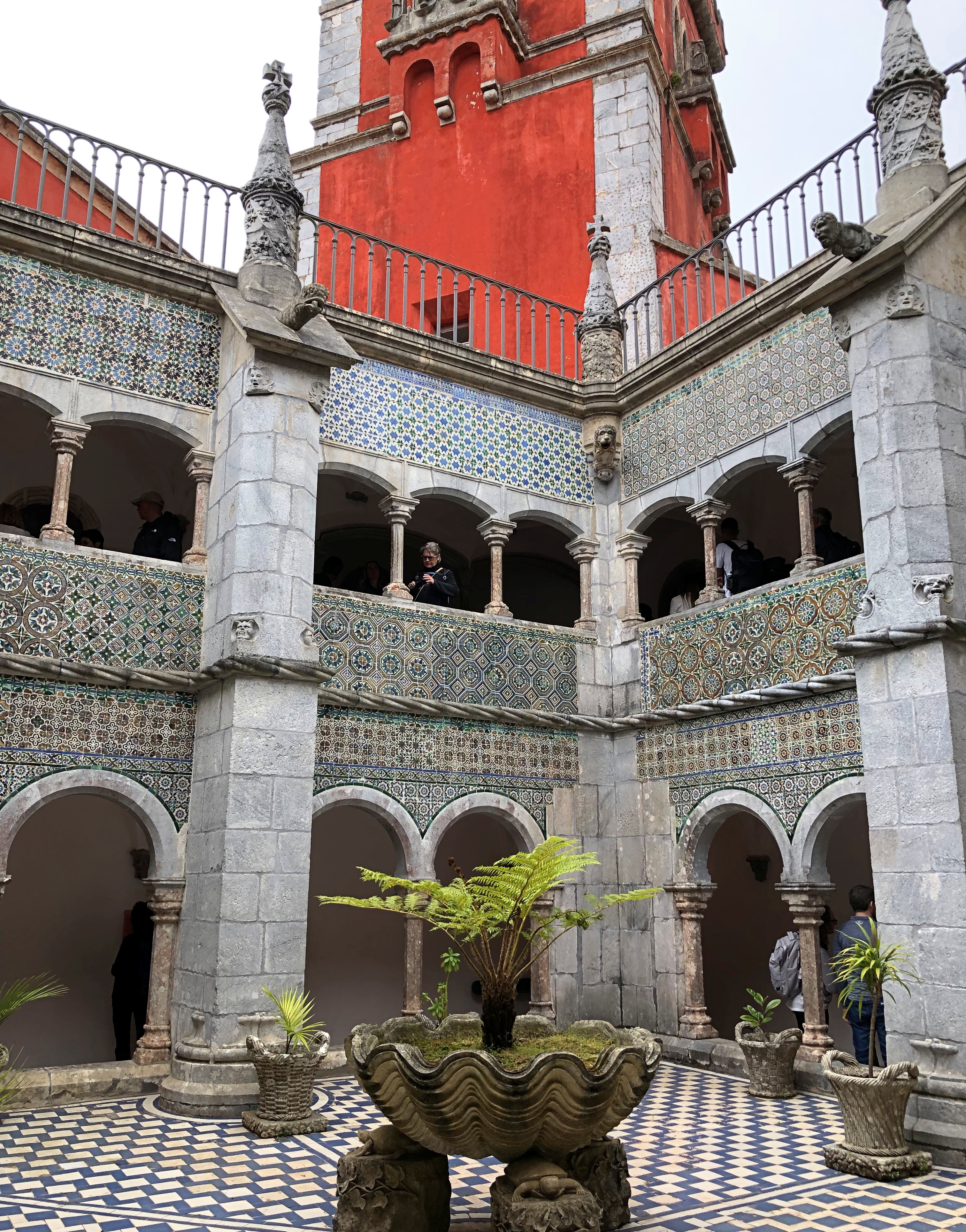
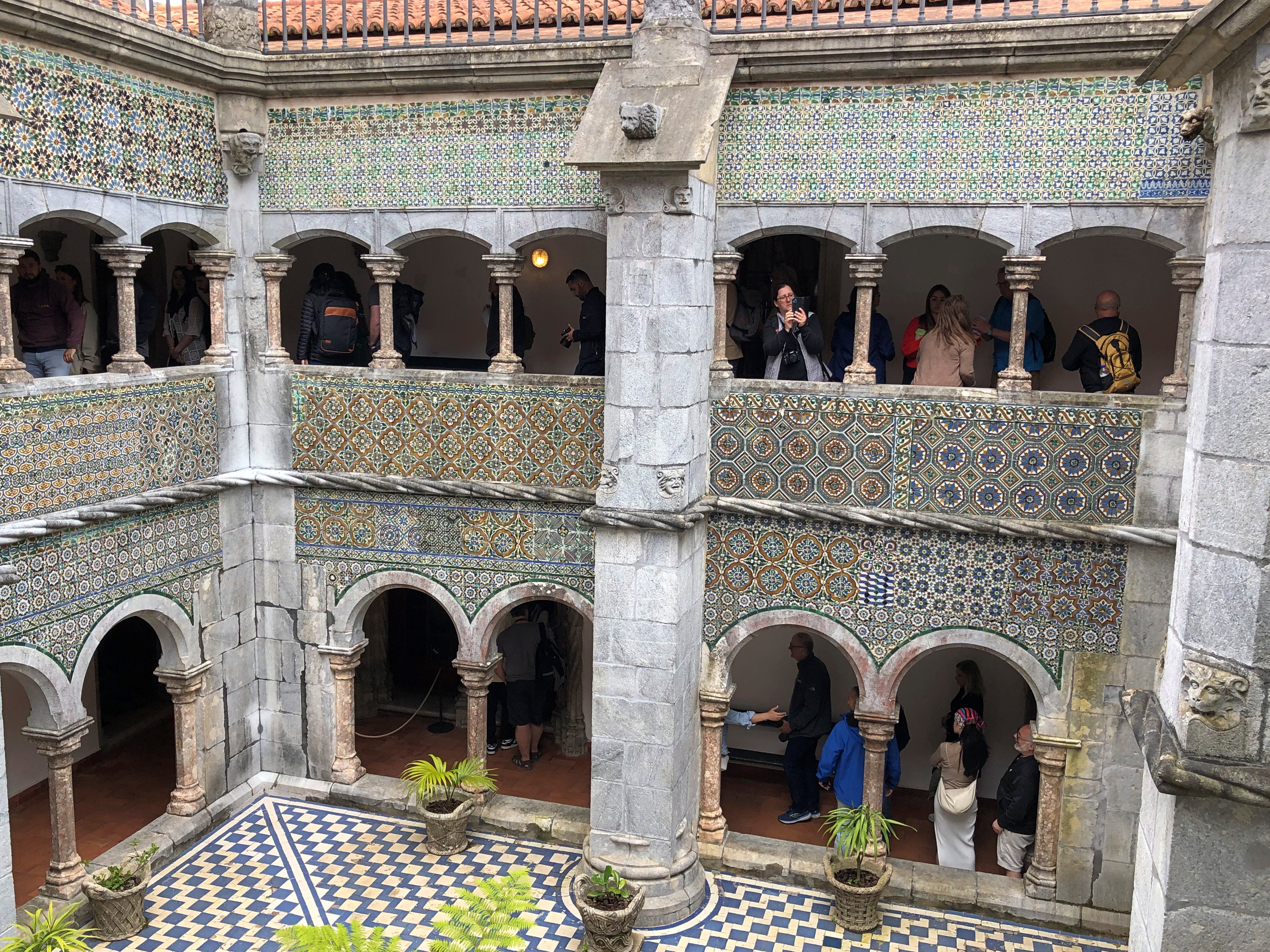

In other parts of the palace, you see kingly things. Such as the king’s office.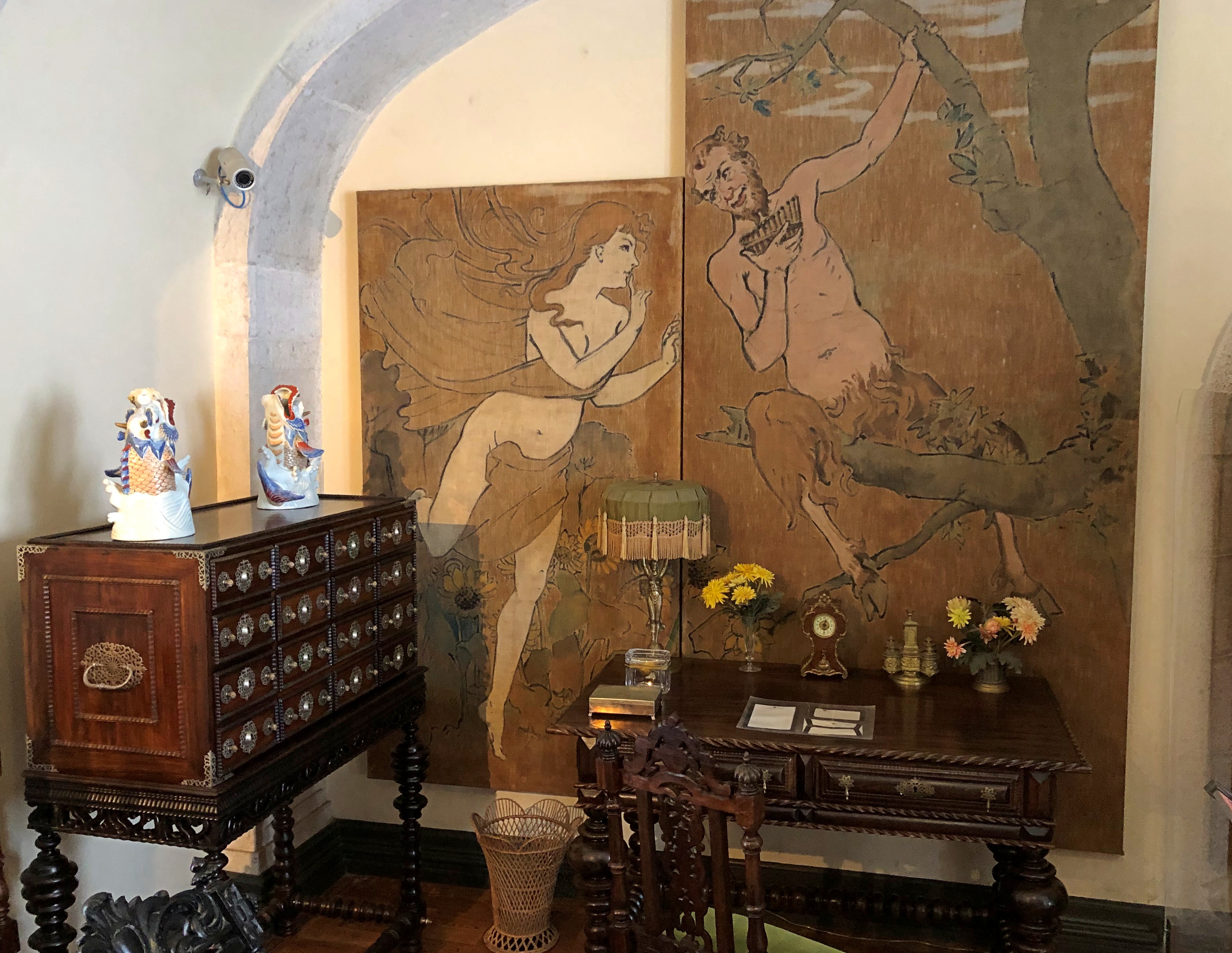
The king’s state-of-the-art telephone.
The king being Carlos, sometimes styled Carlos I, though he was the only one of that name in Portugal. Carlos came to the throne in the late 19th century. His grandfather Ferdinand II got the ball rolling on development of the palace earlier in the century, tapping mining engineer, explorer of Brazil, and amateur architect Wilhelm Ludwig von Eschwege to design it, but Carlos was the last king to spend much time there.
Wiki lists Carlos’ cognomens as The Diplomat; The Martyr; The Martyred; The Oceanographer; The Hunter; The Painter King; The Obese. Quite a selection. Martyr points to Carlos’ fate, gunned down in Lisbon by anti-monarchists in 1908, along with his son and heir-apparent, Luís Filipe. It was a dangerous time for monarchs. And, as it turned out, a dangerous time for monarchy itself in Portugal.
The king might have had all those things above, but the queen – Queen Amelia, Carlos’ wife – had a terrace built for her. It probably got as crowded on the terrace during occasional events at the palace as it does now, but everyone would have been more formally dressed at those long-ago, long-forgotten gatherings.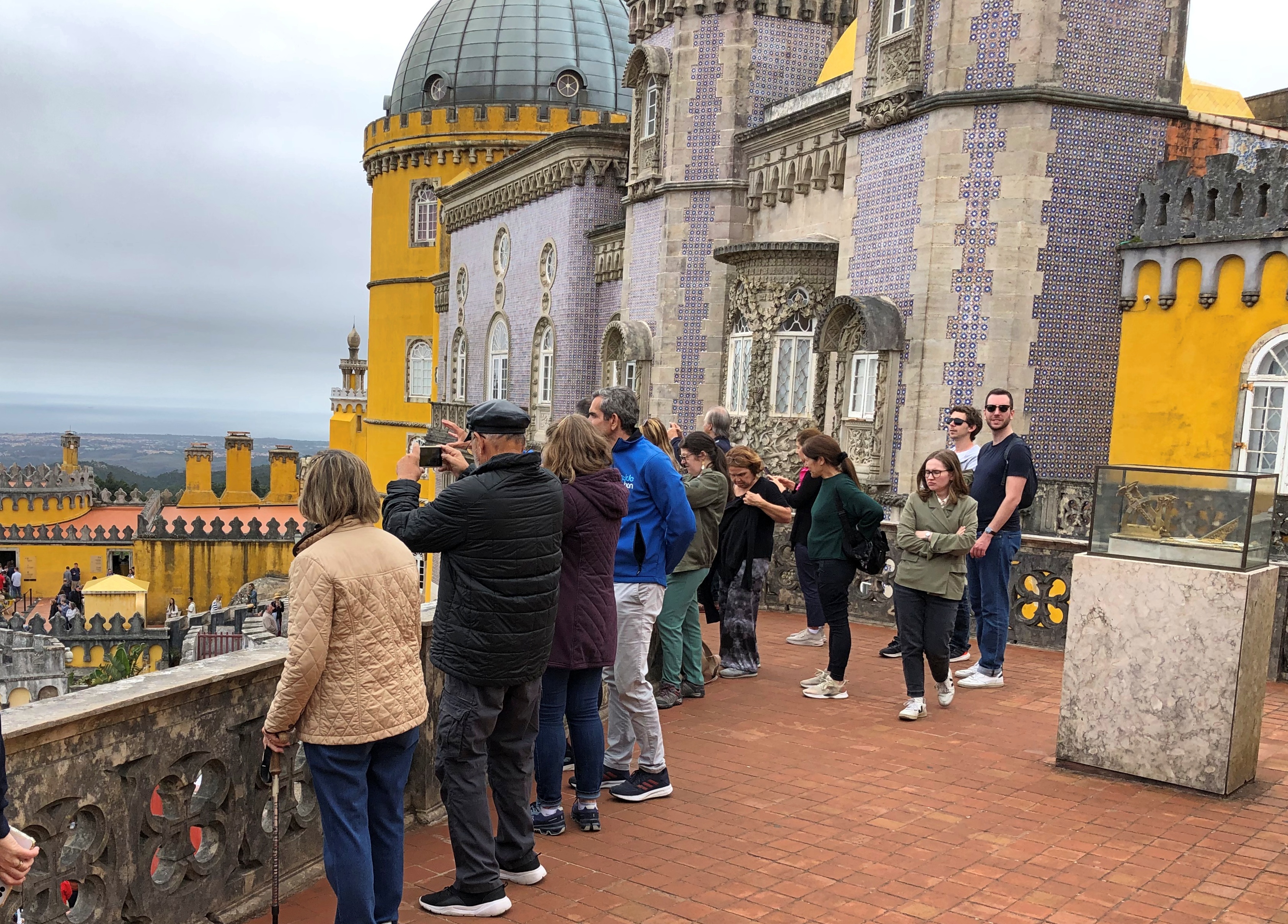


When you take in the view, you forget about the crowds.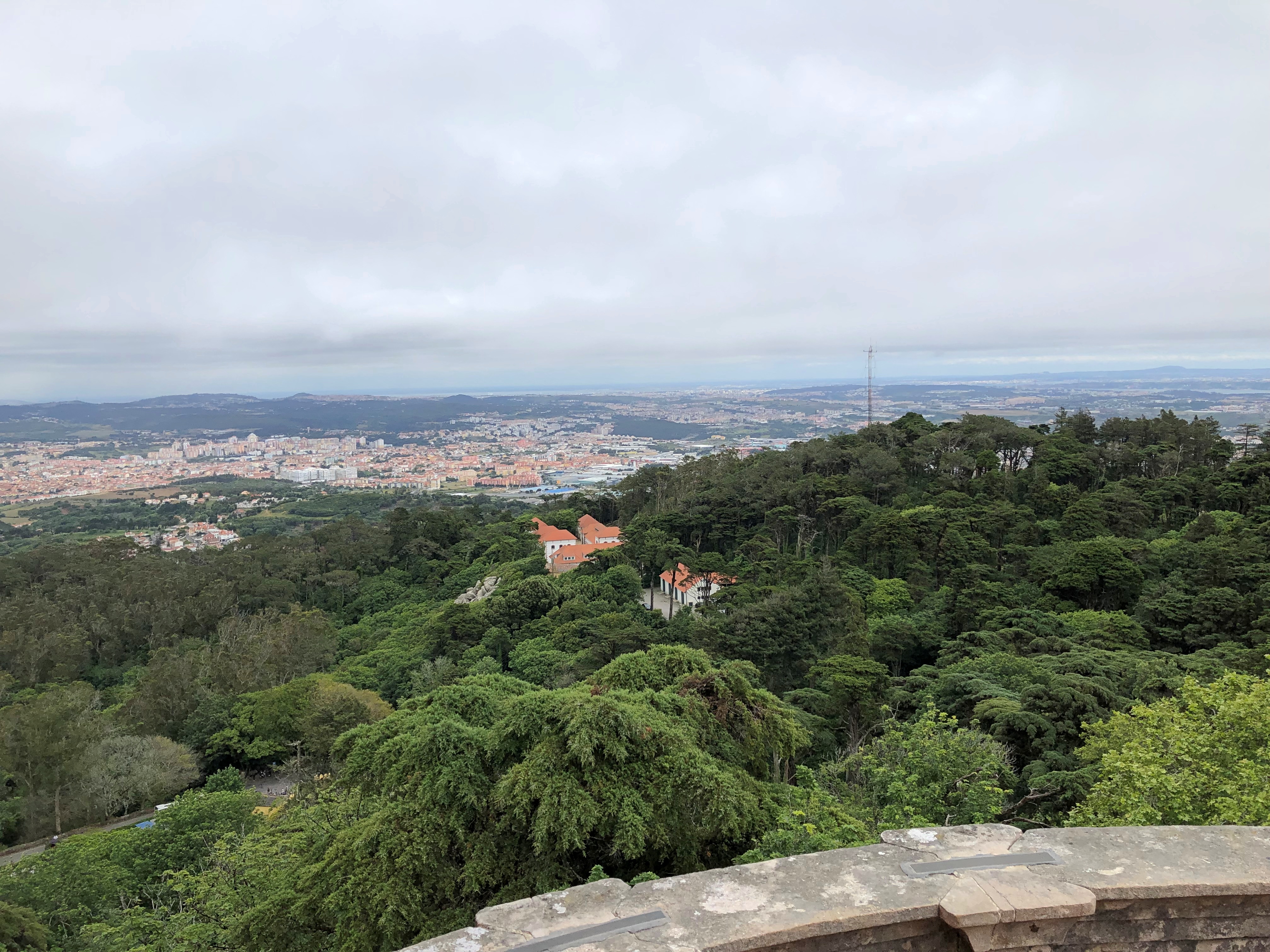
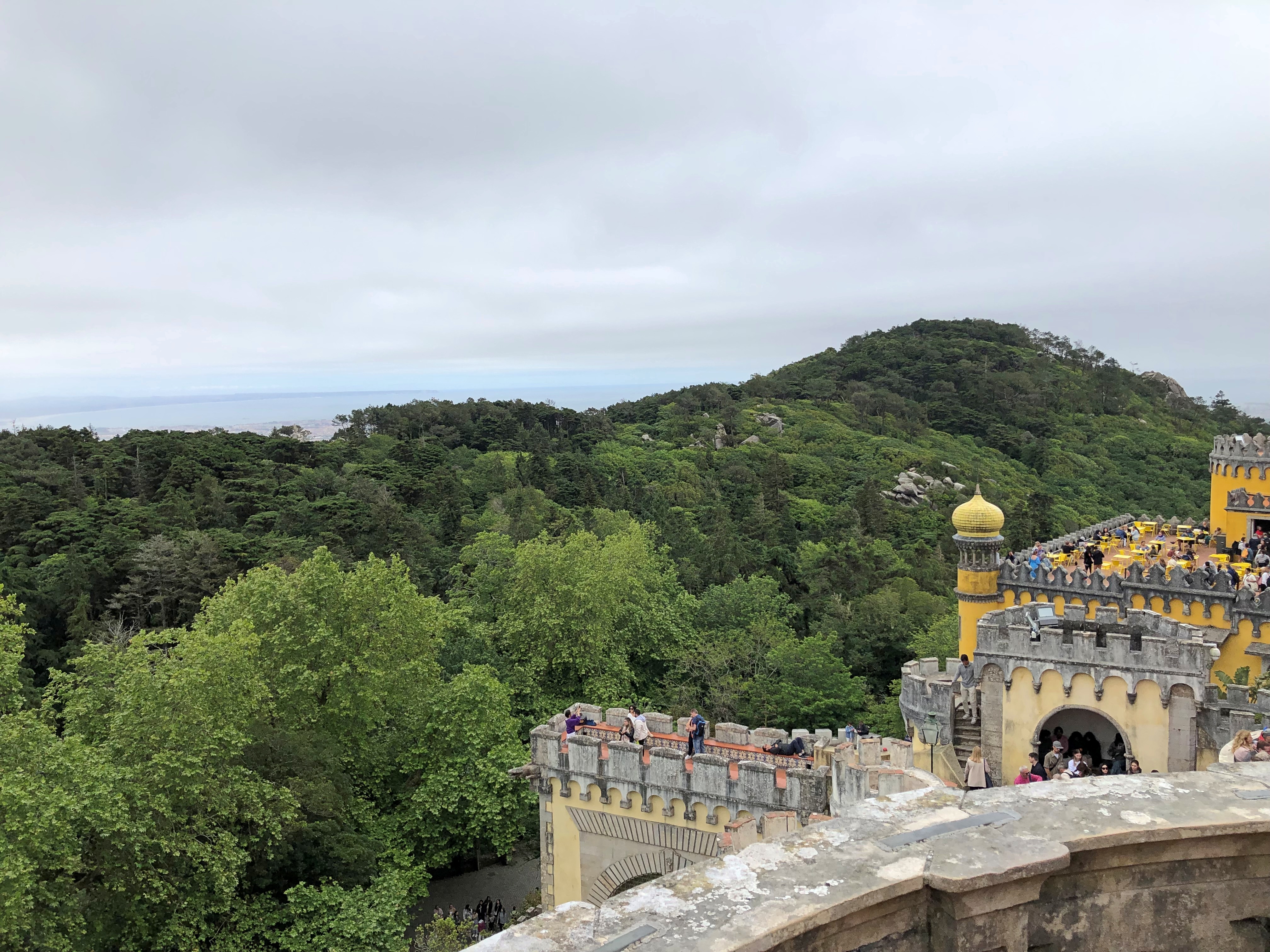
The monastery chapel also survived to be incorporated into the palace.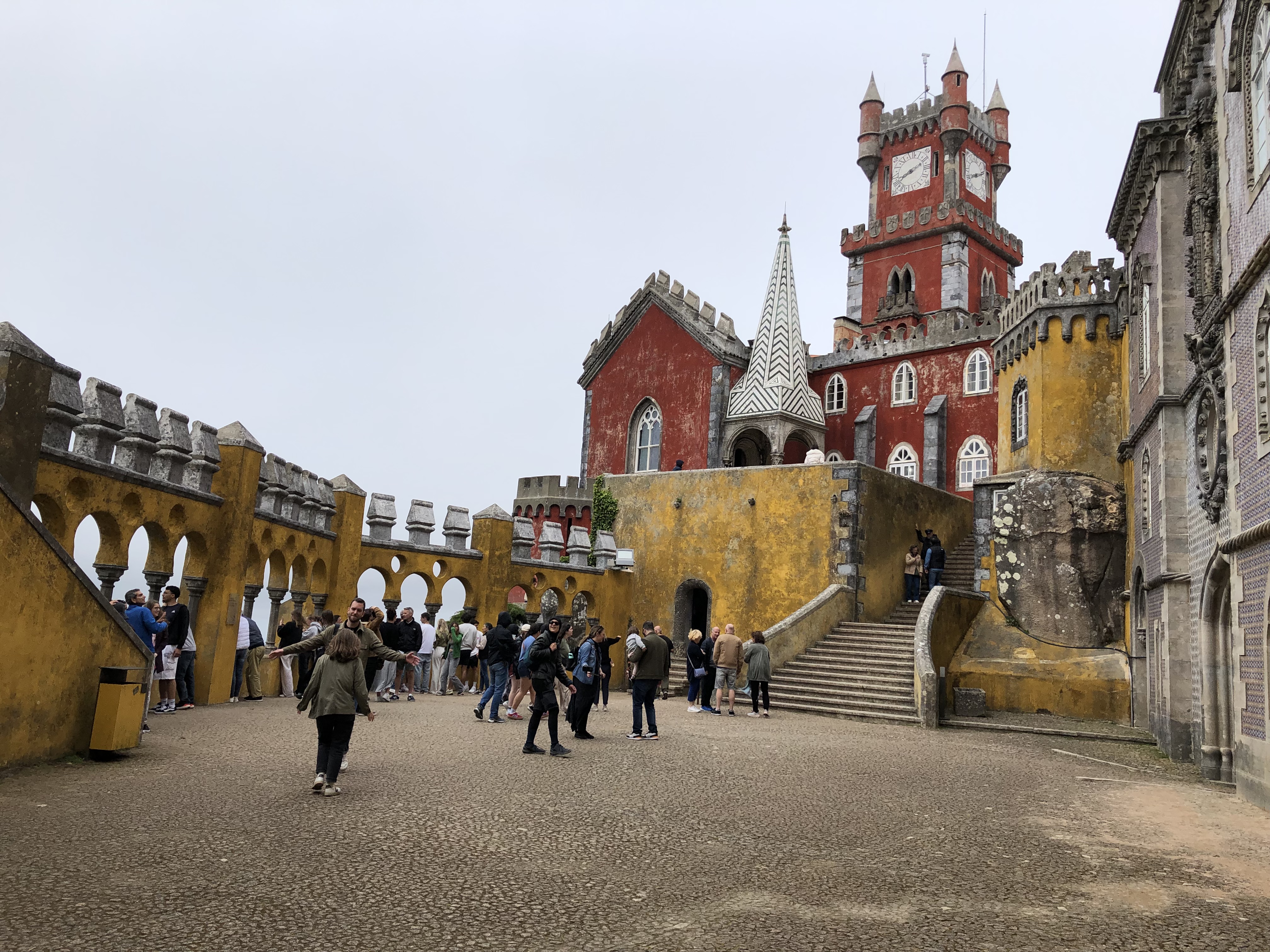

Inside are marble and alabaster works attributed to one Nicolas Chantereine, a French artist who did well for himself in 16th century Iberia.
There’s always more detail, especially in stone — more exuberant detail, wherever you look.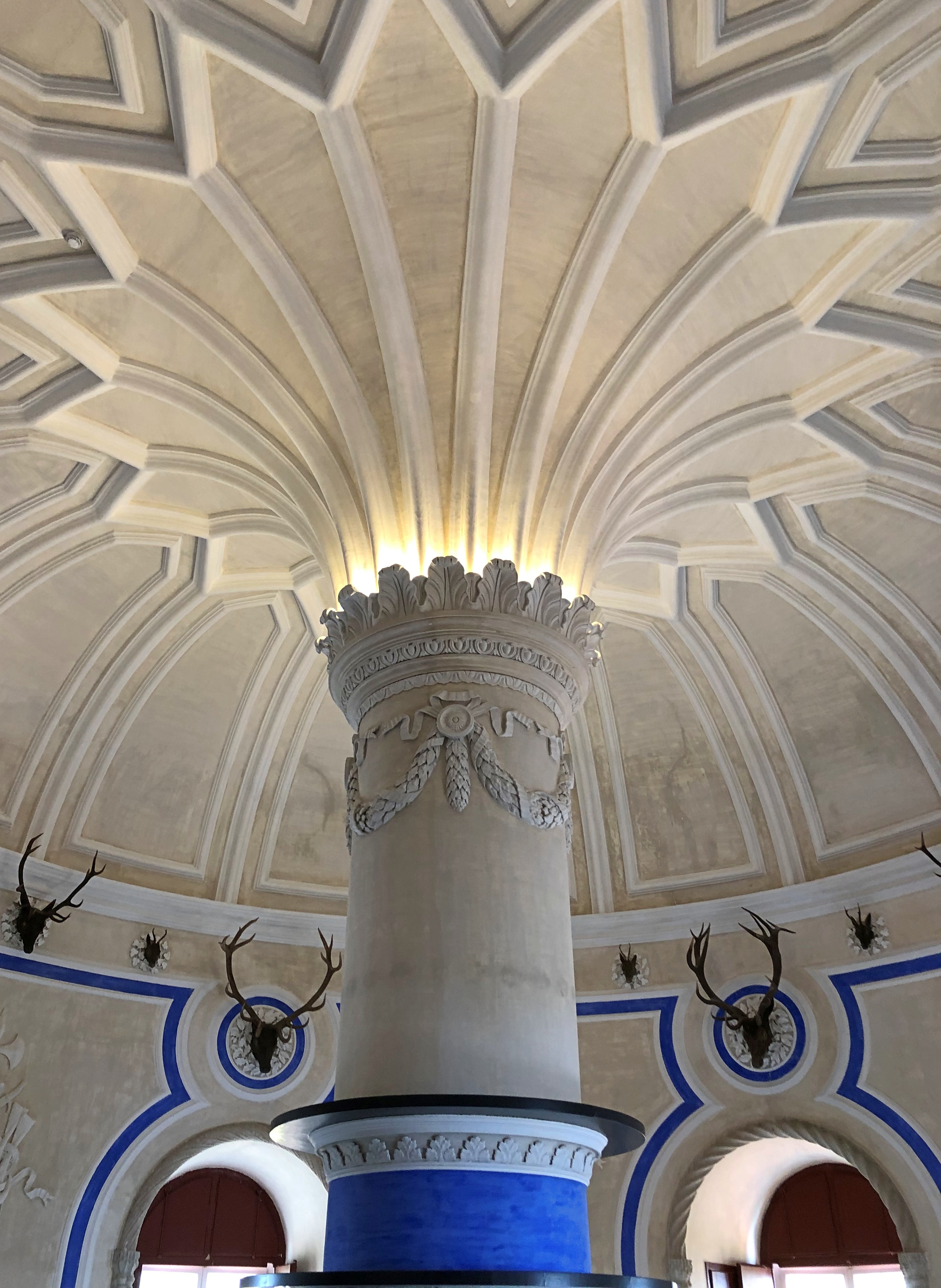
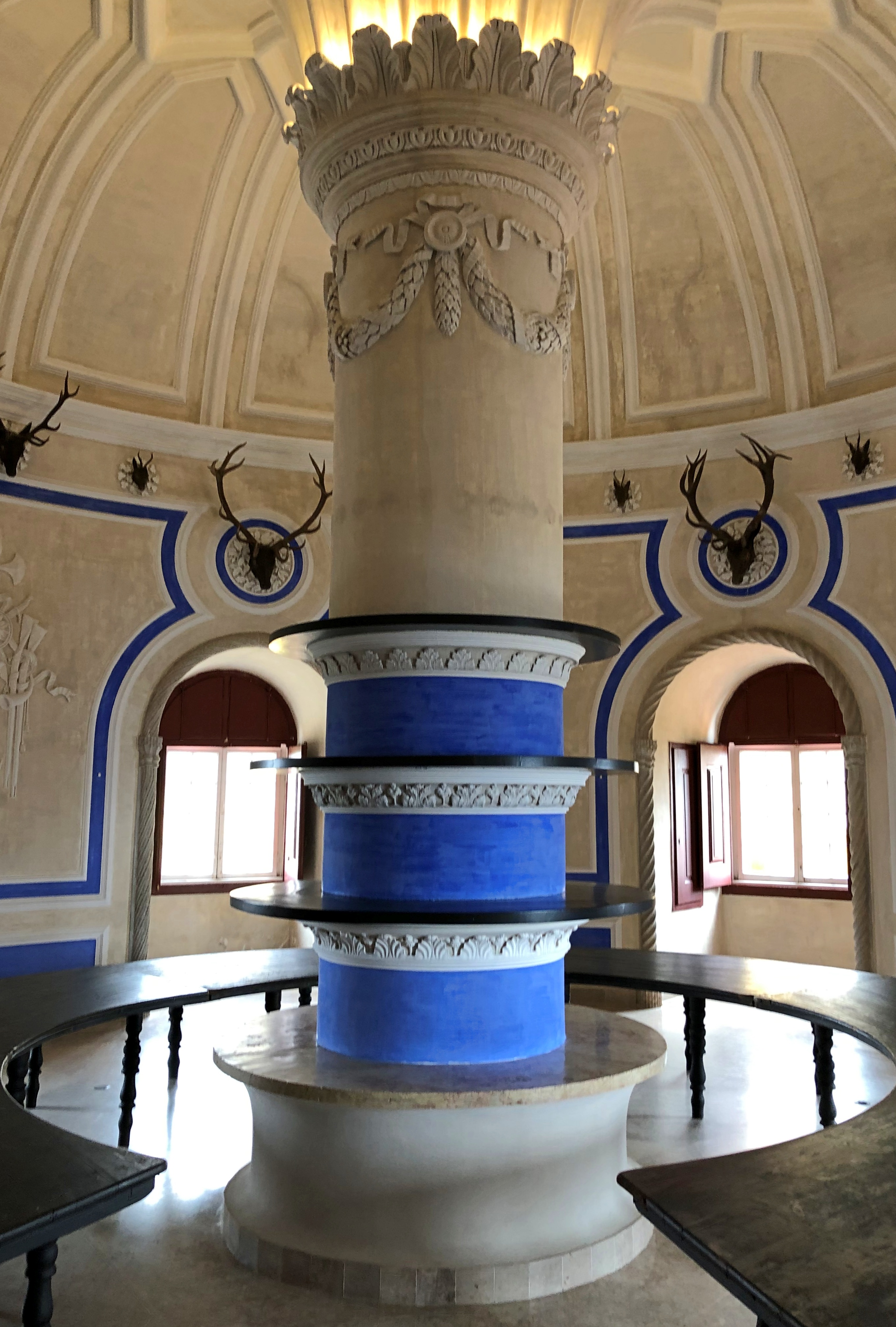
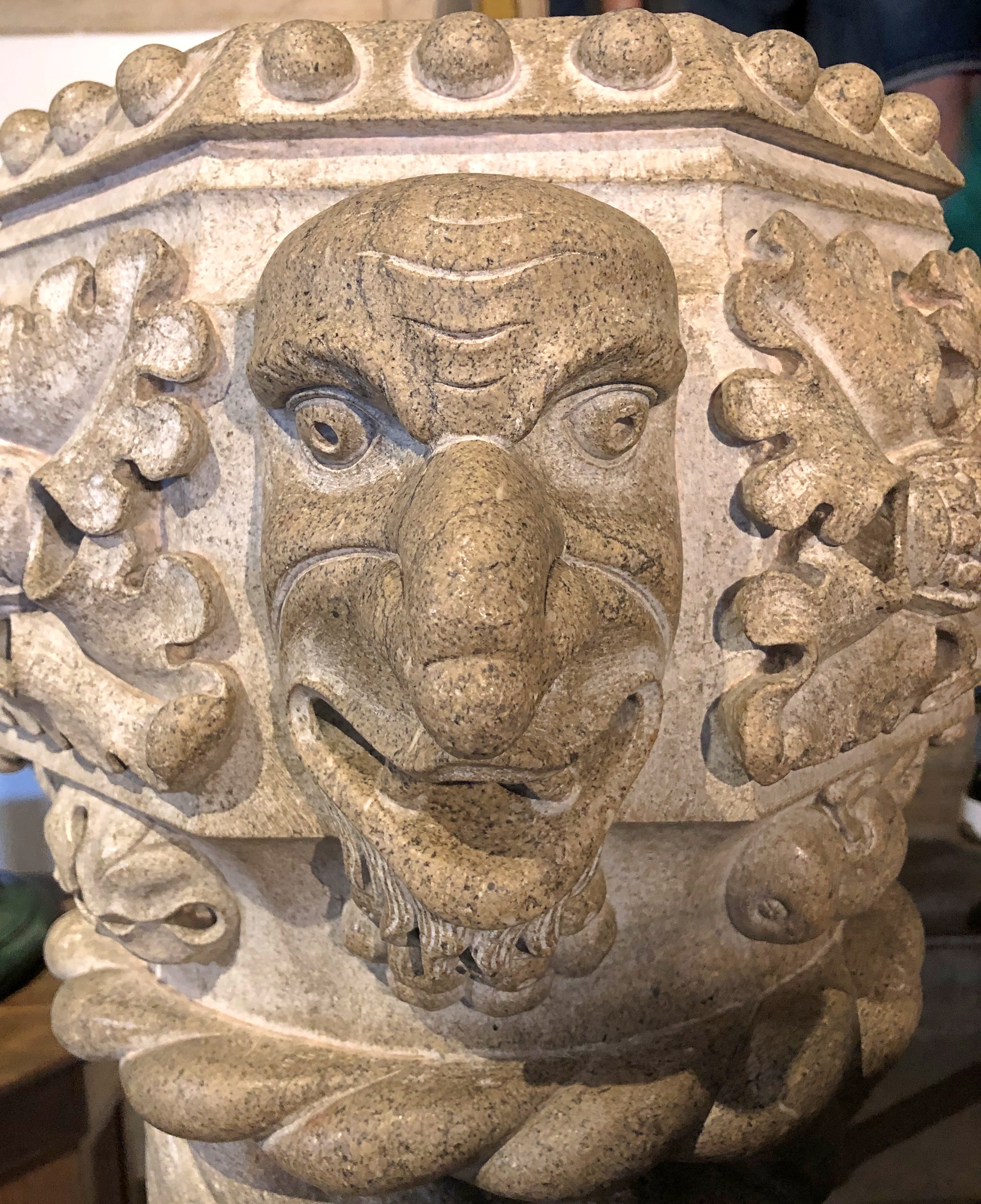
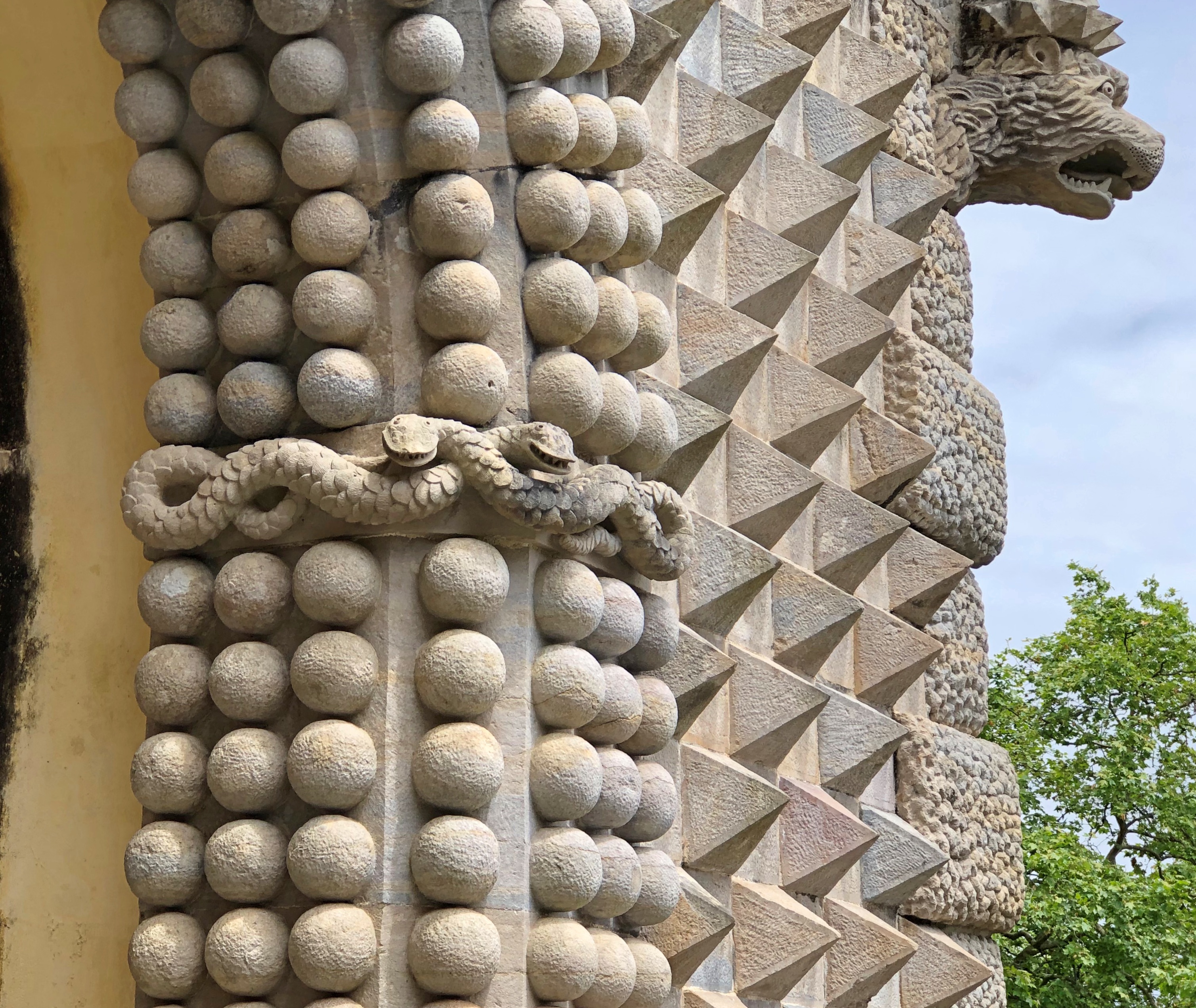
Wonder how often or whether Carlos wandered around the palace, with no crowds around, pondering the detail. Maybe as a way not to think about affairs of state or what to do about the rising tide of republicanism. Was there so much even he would discover bits he hadn’t noticed before? I can’t say for sure, but that’s entirely possible.

